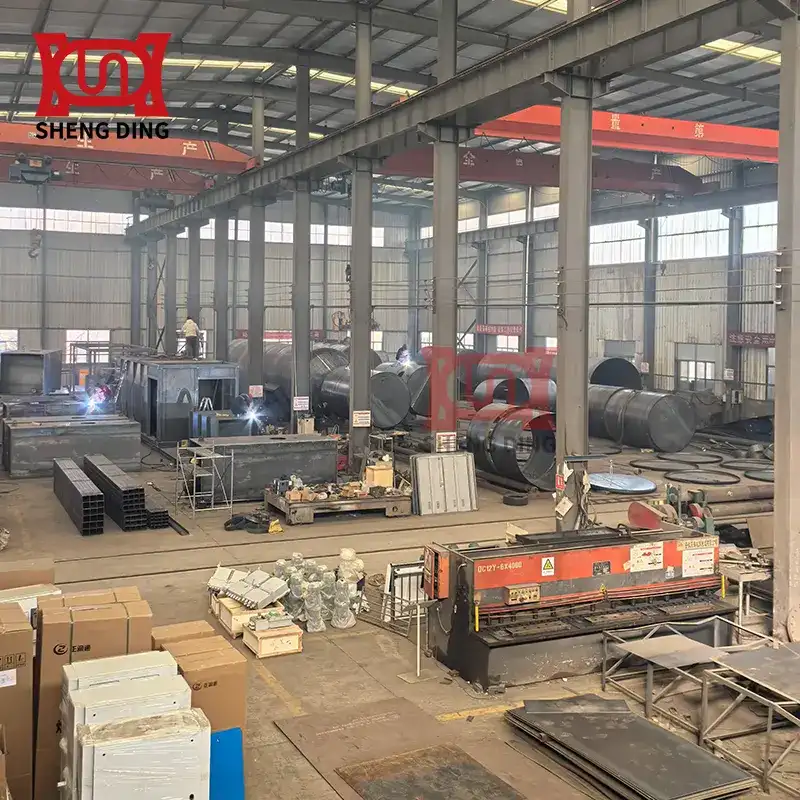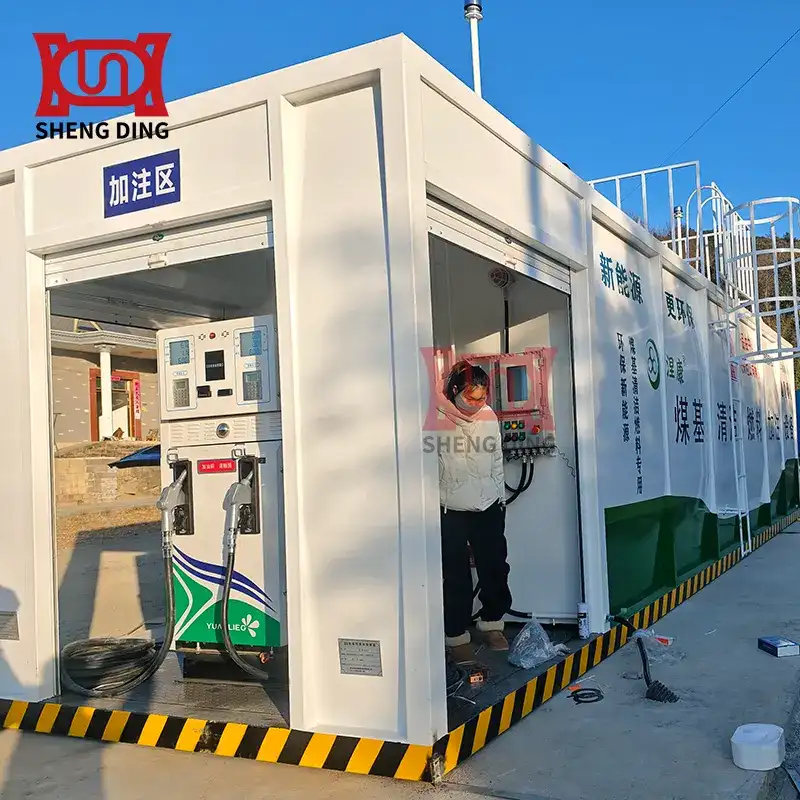Five methods to perfectly treat oily wastewater from skid-mounted gas stations
When cleaning skid-mounted gas stations, you may encounter wastewater with oil stains. It is very difficult to clean it up. If you do not take the following methods and measures, it is difficult to completely remove it. Today, we will explain several methods to remove oily wastewater from skid-mounted gas stations. I hope it will be helpful to you.
1.Membrane separation method.
Membrane separation technology uses the interception effect of specially manufactured porous materials to remove pollutants of a certain particle size in the water by physical interception. The membrane separation process driven by pressure difference is generally divided into three types: ultrafiltration and reverse osmosis. The characteristics of membrane separation technology are that the membrane retention molecular weight can be reasonably determined according to the size of the oil particles in the wastewater of the skid-mounted gas station, and there is generally no phase change during the treatment process, and oil-water separation can be directly achieved; no chemical addition is required, so secondary pollution is small; the post-treatment cost is low, and the separation process consumes less energy; the separated water has a low oil content and the treatment effect is good. However, it is still necessary to use different materials and methods to prepare new membranes with good performance and economy and improve the existing treatment process, so as to overcome some shortcomings of this technology (such as poor thermal stability, corrosion resistance, easy membrane contamination, small treatment capacity, etc.). In addition, a single membrane separation technology cannot solve the problem of oily wastewater treatment very well. It is necessary to combine different membrane separation technologies or combine membrane separation technology with traditional methods to treat oily wastewater, such as ultrafiltration and reverse osmosis, salting out and reverse osmosis, ultrafiltration and microfiltration, etc.
2.Flocculation method.
In recent years, flocculation technology has been widely used in the treatment of oily wastewater due to its strong adaptability and the ability to remove emulsified oil, dissolved oil and some complex high-molecular organic matter that is difficult to biodegrade. However, due to the complex composition of oily wastewater in oil fields, the flocculant selected for a specific treatment object cannot be predicted theoretically, and it must be screened through a large number of experiments. Commonly used flocculants are mainly inorganic flocculants, organic flocculants and composite flocculants. Inorganic polymer flocculants (such as polyaluminium chloride, polyferric sulfate, etc.) have better treatment effects than low molecular weight inorganic flocculants, and the dosage is small and the efficiency is high, but there are disadvantages such as large amount of floccules produced and difficulty in subsequent treatment. Organic polymer flocculants are expensive and difficult to promote and use in large quantities, and are mainly used as additives for other methods. Studies have found that the combined use of inorganic flocculants and organic flocculants can significantly improve the treatment effect. This is because the cations in the organic flocculants play a role in charge neutralization and double layer compression of the emulsified oil droplets in the wastewater, which promotes the emulsified oil droplets to further break up and precipitate. In addition, the organic flocculants have long molecular chains and can bridge between the colloidal particles formed by coagulation to form large and tough flocs, thereby improving the flocculant performance. The performance of the composite flocculant depends on the formation state of the floccules and the amount of their substances. Therefore, improving treatment efficiency and reducing costs by optimizing the composite flocculants has become an important research topic in this field.


3.Biological method
The biological method uses the metabolism of microorganisms to convert organic pollutants in the water in dissolved and colloidal states into stable harmless substances. At present, the treatment processes that are relatively mature and widely used are the activated sludge method and the biofilter method. The activated sludge method uses flowing activated sludge in the aeration tank as a carrier for purification microorganisms, and decomposes organic matter by adsorbing and concentrating microorganisms on the surface of the activated sludge. The skid-mounted gas station biofilter method is to attach microorganisms to the filter material in the biofilter. When the wastewater flows from top to bottom through the surface of the filter material, the organic pollutants are adsorbed and decomposed by the microorganisms. The key to biotechnology lies in biological strains and biological treatment processes. The development of efficient biological strains and treatment processes based on the particularity of oily wastewater is a hot topic in this field.
4.Electrocoagulation method.
The principle of electrocoagulation is to use the cations generated by the electrolysis of soluble electrodes (iron electrodes or aluminum electrodes) and the OH- (hydroxyl anions) generated by water ionization to form a colloid, which coagulates with the pollutant particles in the water to achieve the purpose of separation and purification. At the same time, during the electrolysis process, the intermediate products (such as hydroxyl radicals and atomic oxygen) produced on the anode surface also have a certain degradation effect on organic pollutants. The electrocoagulation method has the advantages of good treatment effect, small footprint, simple equipment, and easy operation. However, it has the disadvantages of large anode metal consumption, large amount of salt as auxiliary agent, high energy consumption, and high operating cost. While ensuring the treatment efficiency, how to further reduce the loss of electrodes and reduce energy consumption is worth further exploration.
5.Flotation method.
The flotation method is to inject air into water in the form of tiny bubbles, so that the tiny bubbles adhere to the oil particles suspended in the water. Because their density is less than that of water, they float up to form a scum layer and separate from the water. The flotation method has great potential in the treatment of oily wastewater due to its advantages such as large processing capacity, small amount of sludge produced and high separation efficiency. At present, the most commonly used methods of flotation are dissolved air flotation, impeller flotation and jet flotation. The dissolved air flotation method and impeller flotation method have the disadvantages of long residence time, troublesome device manufacturing and maintenance, and high energy consumption. In contrast, the jet flotation method of skid-mounted gas stations can not only save a lot of energy consumption, but also has the characteristics of small bubble generation, easy installation and safe operation, so it has good research and application prospects. To improve the flotation effect, flotation agents can be added. On the one hand, flotation agents have demulsification and foaming effects, and on the other hand, they have adsorption and bridging effects, which can make colloidal particles aggregate and float with bubbles. In addition, improvements based on the original flotation device can further improve the oil removal efficiency, such as changing the flotation tank structure from square to round to reduce dead corners or using overflow plates to remove scum.
The above are the five perfect methods to treat oily wastewater from skid-mounted gas stations. We hope that the above description can be of some help to you in treating oily wastewater in the future. Here we would like to remind you again that "protecting the environment is everyone's responsibility", so we must treat the wastewater treatment problem seriously and scientifically.
Written by
TAIAN SHENGDING METAL CONTAINER MANUFACTURING CO., LTD.
Editor Wang
www.self-bunded-tank.com
WhatsApp : +86 152 5486 3111
Email :shengdingtank@126.com
- WhatsApp
- E-MailE-Mail:shengdingtank@126.com
- WeChatWeChat:15254863111









